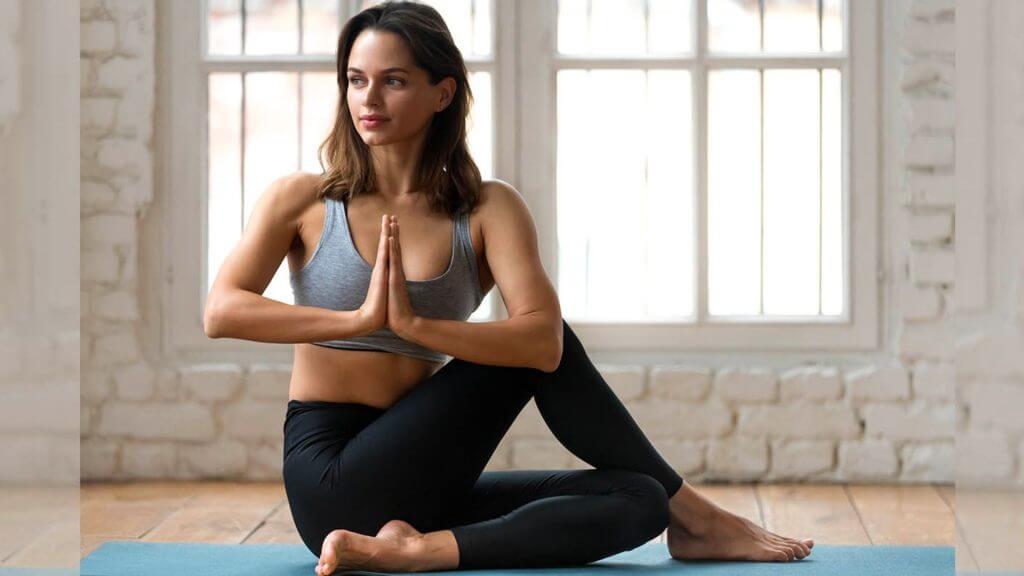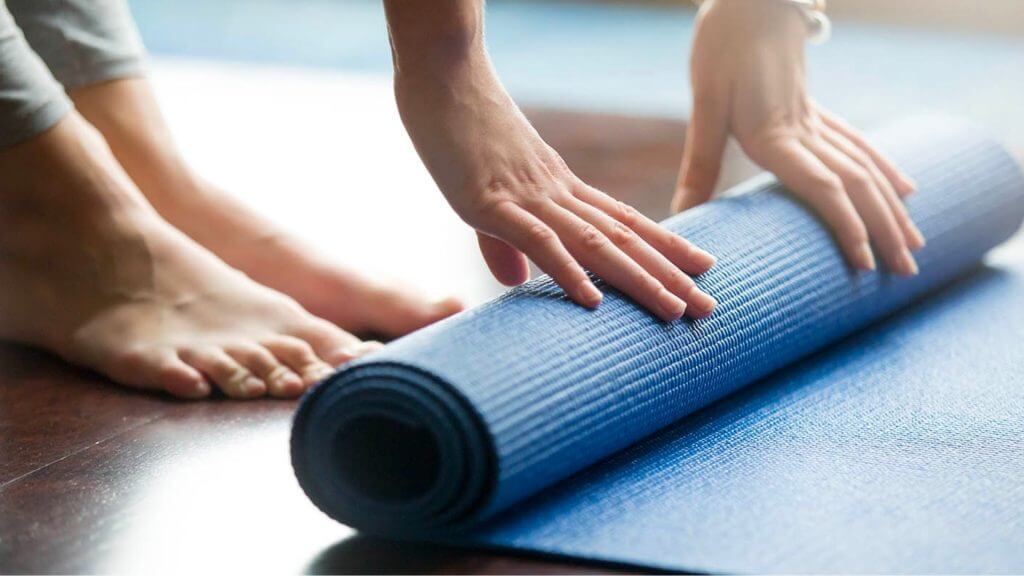
We send you all things hot & interesting from 200+ skill domains in to our community.

Fitness enthusiasts are going gaga over this age-old fitness practice, and it is all the rage in the West. Who is to blame them since yoga is one of the most fun and exciting ways, to begin with fitness?
Yoga comes from the Sanskrit root word “Yuj”, which means ‘to join’, ‘to yoke’ or ‘to unite’. The term ‘yoga’ is pretty apt for its description – the practice of uniting mind, body, and soul. Allow us to introduce you to the different types of yoga practices and its stupendous benefits to your mental health.
Yoga is one of the most heard of in the fitness industry recently. It has experienced a major revamp due to its expansion to the West.

Yoga is so much more than just a workout: it is a lifestyle. Each yoga pose, traditionally known as ‘asanas’, has its significance. Every bend and every ‘mantra’ has a unique appeal to both body and mind. Nothing in this practice is done in isolation. Everything (mind, body, and thoughts) is woven together. Just like other workout practices, yoga has also established itself as the ultimate form of head, hand, and heart workout.
In yoga poses, the primary aim should be to establish a connection to reap benefits. Since different yoga types come with their advantages, their essence and significance would be lost if done mindlessly.
Fitness gurus and die-hard practitioners have felt the need to indulge in yoga as a regular practice to be fit. This transformation has shed some much-needed light on the benefits of yoga – the primary one being its influence on mental health. Each type of yoga imparts a unique benefit to your mind. Let’s understand this.
Learning yoga on your own
Learning yoga on your own allows you to practice at your own pace and on your schedule. It also gives you the freedom to explore different styles and poses that may not be offered in a traditional class. However, it can be challenging to learn proper alignment and technique without the guidance of a qualified yoga teacher.
There are broadly twelve styles of yoga include—each one with its distinct style and consequences. You ought to get the asanas correct by understanding the kind of Yoga you choose and its takeaways. Your analytical skills will come in real handy while This analysis will help comprehend which type of Yoga is the best for you. Here is an in-depth analysis of the popular yoga types to introduce you, to beginners to Yoga.
The following is an exhaustive list of the twelve types of yoga, with their different benefits and how all that you can expect in a yoga class. So, grab your yoga mat, and let’s get started!
Vinyasa stands for moving in harmony with your breath. Doing this yoga gives you the freedom to move in line with your respiration. Vinyasa yoga is the best for beginner yogis. With the ebb and flow of each exhale and inhale, you change your postures or asanas smoothly. The transition should be effortless and in synchronization with breathing. It also gives you a chance to focus on your connective tissues and nervous system. This is what Vinyasa believes in as it becomes the most practiced yoga style.
Your presence of mind directs you to switch the posture and get in even more profound contact with your body when moving through your sun salutation. Therefore, a Vinyasa yoga class builds mental awareness and consciousness.
‘Hatha’ (Sanskrit) stands for ‘hands’. This is a beginner-friendly yoga type, a well-balanced cocktail of meditation and physical poses (asanas). Hatha yoga awakens the power within you. Through mindful body movements, you look into how each particular asana is different from the other and what effect it has on the body while keeping in view of sensations it sends to the mind. You don’t rush with this type of yoga.
The sensory and cognitive abilities of the brain will undergo a positive change with regular Hatha yoga classes.
It is just the opposite of Vinyasa yoga. Brought to life by Paulie Zink, in a Yin yoga session, you practice how to hold a yoga pose for a longer duration (more than 3 to 5 minutes). Yin yoga aims to access the inner realms of your mental zone. It is also known as Taoist yoga. It is strictly inclined to explore the experiences you have yielded so far and broaden your horizons.
Like the Chinese Yin and Yang theory practice, this yoga is based on the Yin elements of patience, perseverance, susceptibility, and permission.
Yin yoga is a meditative mind-body practice to be incorporated if you are looking for a way to connect with your body and are up for deep soul searching. Nothing in Yin yoga should be forced. Try to flow with passion and kindness during the practice session.
The word ‘ashtanga’ is a Sanskrit word which, when broken down, gives us ‘asht’ meaning ‘eight’ and ‘anga’ meaning ‘parts’. Therefore eight parts or limbs.
Ashtanga yoga comprises the eightfold path which leads to your spiritual arousal. This spiritual arousal and awareness are caused by a combined hand-in-hand movement of the body (that brings your heart rate up) and mind (that brings more awareness).
Ashtanga has a more conservative attitude tied to it. It has a fixed number of steps to be executed in a particular order. You cannot tweak Ashtanga yoga. 12 poses of Surya Namaskar fall under this yoga-type practice. Therefore, it trains your mind for:
Generally, people confuse and use Vinyasa and Ashtanga yoga interchangeably. But there exists a difference. You can fine-tune and adjust asanas in Vinyasa yoga, but the same is not allowed in Ashtanga Yoga.
Power yoga is also an offshoot of traditional Ashtanga yoga. Consider a power yoga class as a freestyle version of it. Highly popular nowadays, power yoga gives trainers and yogis the freedom to add and subtract any asana/posture.
It has become a potent form of yoga to lose weight. The brisk, synchronized asanas are nothing less than a hot cardio session. You go all in to test your strength, stamina, flexibility, mental realization, and focus with Power yoga.
Bikram yoga was brought into reality by Bikram Choudhury in the 1970s. This yoga has 26 poses with a set of 2 breathing exercises. These poses are repeated in cycles. A Bikram yoga class ought to last for about 90 minutes. The poses are to be done in a process and have originated from the traditional hatha yoga poses.
A session of this yoga will leave you sweaty and panting. Its practitioners vouch for it and claim that Bikram yoga quickly helps to detox and rejuvenates the mind and body, allowing better oxygen flow.
Iyengar yoga was curated by B.K.S Iyengar. In an Iyengar yoga session, you use different props to aid in better posture formation and alignment. The props include blankets, blocks, mats, rollers, etc., to ease you into the correct way of holding an asana. With this yoga, you are well aware of your form.
Kundalini yoga combines spirituality and physicality, emphasizing the release of trapped kundalini energy in the lower spine.
The practice involves fast-moving postures, breathing exercises, chanting, mantra, and meditation. Learn more in our Kundalini yoga explainer.
Restorative yoga emphasizes the relaxation of the body and mind after a long day. It involves modified poses and the use of props such as blankets, bolsters, and eye pillows to enhance relaxation.
Prenatal yoga is a modified form of yoga for expectant mothers that focuses on pelvic floor work, breathing, and bonding with the baby. It prepares mothers for labor and delivery and emphasizes stability over flexibility using props.
Anusara is a contemporary version of hatha yoga that emphasizes alignment and the mind-body-heart connection. It was founded by John Friend but he resigned in 2012 due to allegations of sexual misconduct and financial mismanagement. Anusara involves spirals and heart opening, and instructors may pause to break down poses.
Sharon Ganon and David Life founded Jivamukti in 1984, offering vinyasa-flow-style classes that integrate Hindu spiritual teachings. The practice emphasizes connection to Earth as a living being, and most Jivamukti followers adhere to a vegetarian philosophy. Classes typically begin with chants and progress through poses aligned with the practice’s five tenets.
Some potential benefits of hot yoga classes may include increased flexibility, improved cardiovascular health, stress relief, and detoxification through sweating. However, it is important to note that hot yoga may not be suitable for everyone and can pose certain risks, such as dehydration and overheating. It is important to consult with a healthcare professional before starting a hot yoga practice.
Performing each pose with great alertness of the associated little nuances will submerge you in a state of trance. As you calmly engross in an Iyengar yoga session, you will rid your body and mind of all kinds of tension or strain.
There are all kinds of different yoga types to try, and they all come with their unique set of benefits and asanas. Each style is carefully curated to impart a full mind and body experience. To reap all the advantages of doing yoga, it’s best to know your form of yoga, and the end goal and then dive into each type of yoga to know which one aligns with your goals. Yoga works wonders when you surrender your body to the practice and submit your mind to attain that meditative state of peace.